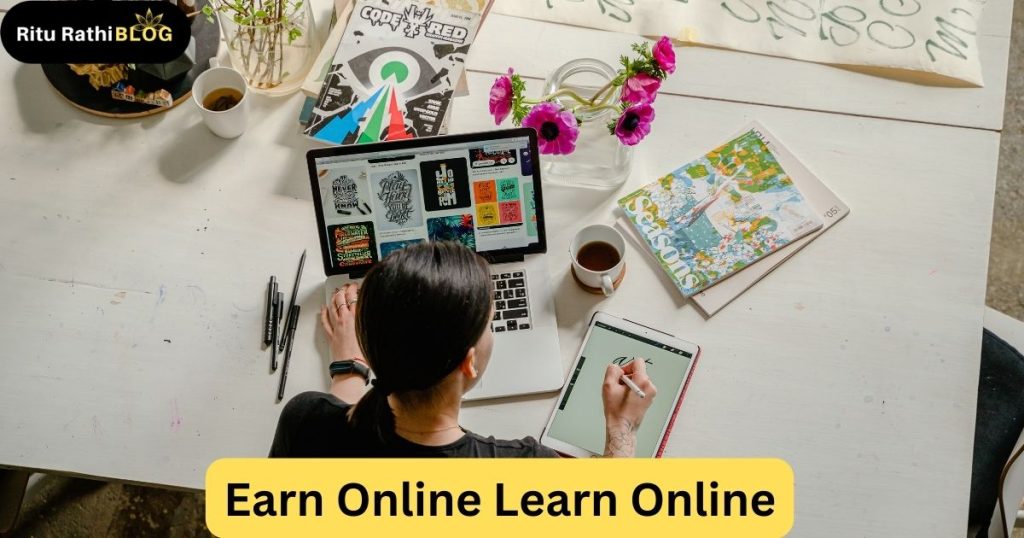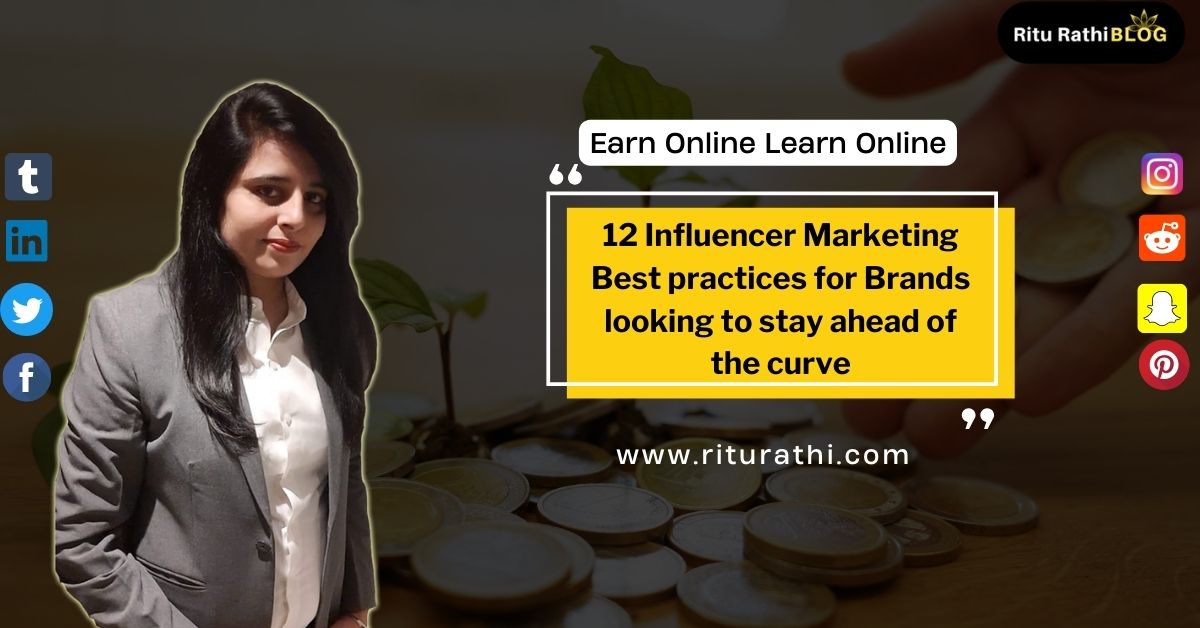Influencer marketing has become an increasingly popular and effective marketing strategy for brands looking to reach their target audiences through trusted and authentic voices. With the rise of social media and influencer culture, the landscape of influencer marketing continues to evolve and grow.
In this blog, related to “12 Influencer Marketing Best practices for brands looking to stay ahead of the curve” , we will delve into the current state of influencer marketing, its future prospects, and how brands can effectively leverage this powerful tool to drive results.
From understanding the right influencer fit to navigating social media algorithms and measuring impact beyond traditional metrics, we will provide 12 key insights and best practices for brands looking to stay ahead of the curve in influencer marketing

Let’s get answer of all the above questions in detail :
How are micro-influencers changing the face of influencer marketing?
- Micro-influencers have become more important because they have smaller, but highly engaged and loyal followers who trust their recommendations.
- They often have a more niche focus, making them a better fit for certain brands and products.
- Micro-influencer campaigns tend to be less expensive than macro-influencer campaigns, making them a more accessible option for smaller brands.
- Micro-influencer campaigns often result in higher engagement rates, as followers feel a closer connection to the influencer.
What makes an influencer marketing campaign successful and how can ROI be measured?
- A successful influencer marketing campaign is one that aligns with the brand’s target audience, message, and goals.
- The influencer should have a genuine connection to the brand and its products, as well as a strong and engaged following.
- The content should be high-quality, relevant, and on-brand.
- ROI can be measured through metrics such as increased website traffic, sales, and brand awareness, as well as more qualitative metrics like engagement rates and sentiment analysis.
Can technology play a role in making influencer marketing more efficient and effective?
- Yes, technology can play a significant role in influencer marketing by automating tasks like influencer discovery, contract management, and payment processing.
- Technology can also provide more accurate and detailed metrics for measuring the success of influencer campaigns.
- Tools like AI and machine learning can also help brands identify the best influencers for their campaigns and analyze the performance of past campaigns.

What are the ethical considerations brands need to keep in mind when working with influencers?
- Brands need to ensure that influencer partnerships are disclosed as paid or sponsored content.
- Influencers should only promote products and services they believe in and have a genuine connection to.
- Brands need to be mindful of the audience they are reaching through influencer campaigns and avoid promoting harmful or controversial products.
- Brands should also ensure they are working with influencers who have a positive reputation and values that align with their own.
What does the future of influencer marketing look like and how will it evolve in the next 5-10 years?
- Influencer marketing will continue to grow and evolve as a key marketing strategy for brands.
- Brands will likely place a greater emphasis on partnering with micro-influencers and niche-focused content creators.
- Influencer marketing will likely become even more integrated with technology, such as AI, augmented reality, and virtual influencer creations.
- Brands will also place more importance on ethical and sustainable influencer partnerships, including fair compensation and responsible product promotion.
- Influencer marketing will also expand beyond traditional social media platforms to include new and emerging technologies like voice-activated devices and virtual reality.
How can brands ensure they are working with the right influencer for their target audience and goals?
- Brands should carefully research and vet potential influencer partners to ensure they have a following that aligns with the brand’s target audience.
- Brands should also look for influencers who have a genuine connection to the brand and its products, as well as a positive reputation.
- The brand should also consider the influencer’s content style, tone, and values to ensure they align with the brand’s messaging.
- Brands can also conduct pilot campaigns with a small group of influencers to test their performance and determine which influencer is the best fit.
How has the pandemic impacted influencer marketing and what changes have we seen as a result?
- The pandemic has caused a shift towards more socially-distanced and digital forms of marketing, including influencer marketing.
- Brands have had to pivot their influencer campaigns to reflect the new reality of remote work and lockdowns.
- Influencer collaborations have moved increasingly online, with virtual events and product launches replacing in-person activations.
- Brands have also become more cautious about influencer partnerships, as many consumers have become more price-conscious and focused on essential goods.
What impact has social media algorithms had on influencer marketing and how can brands adapt?
- Social media algorithms have reduced the organic reach of influencer content, making it more challenging for brands to get their message in front of their target audience.
- Brands need to adapt by investing in paid social media advertising and influencer partnerships, as well as creating high-quality and engaging content.
- Brands can also explore alternative social media platforms that may have lower competition and higher engagement rates.
- Brands should also be aware of changes in social media algorithms and adjust their strategies accordingly.
How can brands make the most of user-generated content and leverage it in their influencer marketing campaigns?
- Brands can encourage their customers to create and share content featuring the brand’s products or services.
- Brands can then repost and amplify this user-generated content through their own social media channels and influencer marketing campaigns.
- User-generated content can be especially powerful in creating social proof and building trust with potential customers.
- Brands can also incentivize users to create and share content, such as by offering discounts or exclusive promotions.
How can brands measure the impact of influencer marketing beyond traditional metrics like engagement and followers?
- Brands can measure the impact of influencer marketing through metrics such as website traffic, sales, and brand awareness.
- Brands can also track the reach and impact of influencer campaigns through tools like Google Analytics.
- Qualitative metrics like sentiment analysis and customer feedback can also provide valuable insights into the effectiveness of influencer campaigns.
- Brands can also use influencer marketing to gather insights into their target audience, such as consumer behaviors and preferences, which can inform future marketing strategies and product development.
- Brands can also track the long-term impact of influencer marketing by monitoring the ongoing engagement and loyalty of customers who were acquired through influencer campaigns.
What are the 10 Best Influencer Marketing Research Tools for 2023?
Here are the 10 best influencer marketing research tools:
1. HypeAuditor:
HypeAuditor is an influencer marketing platform that provides detailed analytics on influencer audience demographics, engagement rates, and authenticity.
2. Traackr:
Traackr is an influencer marketing platform that uses AI-driven analytics to help brands identify and connect with influencers who align with their values and goals.
3. Upfluence:
Upfluence is an influencer marketing platform that provides tools for identifying influencers, managing campaigns, and tracking results.
4. BuzzSumo:
BuzzSumo is a content marketing tool that can also be used for influencer research. It helps brands identify popular content and the influencers who share it.
5. Klear:
Klear is an influencer marketing platform that provides detailed analytics on influencers’ audience demographics, engagement rates, and historical performance.
6. Mention:
Mention is a social listening tool that can be used for influencer research by tracking conversations related to your brand and identifying influencers who are talking about your industry.
7. Grin:
Grin is an influencer marketing platform that helps brands manage influencer campaigns, including influencer discovery, relationship management, and payment processing.
8. AspireIQ:
AspireIQ is an influencer marketing platform that provides tools for influencer discovery, campaign management, and reporting.
9. NinjaOutreach:
NinjaOutreach is an influencer marketing tool that helps brands find and connect with influencers for outreach campaigns, as well as manage ongoing relationships.
10. CreatorIQ:
CreatorIQ is an influencer marketing platform that uses AI-driven analytics to help brands identify and manage influencers, as well as measure the success of their campaigns.
What are the 10 mistakes to avoid when selecting the best influencer for your brand:
1. Not defining your target audience and goals:
Before selecting an influencer, it’s important to understand your target audience and what you hope to achieve with your influencer marketing campaign.
2. Focusing solely on the influencer’s follower count:
While a large following is important, it’s not the only factor to consider when selecting an influencer. You should also consider their engagement rates and audience demographics.
3. Ignoring engagement rates and authenticity:
High follower counts don’t necessarily translate to high engagement rates or authenticity. It’s important to analyze an influencer’s engagement rates and look for signs of authenticity, such as genuine comments and interactions with their followers.
4. Failing to research an influencer’s past behavior or controversies:
It’s important to research an influencer’s past behavior and look for any potential controversies that could reflect poorly on your brand.
5. Overlooking micro-influencers and nano-influencers:
While large influencers can be effective, micro-influencers and nano-influencers can offer more targeted audiences and often have higher engagement rates.
6. Not negotiating clear terms and expectations with the influencer:
It’s important to establish clear terms and expectations with the influencer, such as the type of content they will create and how they will promote it.
7. Treating influencer marketing as a one-time campaign:
Influencer marketing should be viewed as a long-term strategy rather than a one-time campaign.
8. Not tracking and analyzing campaign metrics and ROI:
It’s important to track and analyze campaign metrics, such as engagement rates and ROI, to measure the success of your influencer marketing efforts.
9. Relying too heavily on sponsored posts and not enough on organic content:
While sponsored posts can be effective, it’s also important to encourage influencers to create organic content that aligns with your brand’s values and messaging.
10. Not building a long-term relationship with the influencer:
Building a long-term relationship with an influencer can lead to more effective and authentic content, as well as more cost-effective campaigns in the long run.
Also read our blog related to E-commerce techniques to make money online
Conclusion :
In conclusion, influencer marketing is a dynamic and rapidly growing field that offers significant opportunities for brands to connect with their target audience and drive meaningful results. By staying attuned to the latest trends, challenges, and best practices, brands can effectively navigate the ever-evolving influencer marketing landscape and make the most of this powerful marketing tool. Whether it’s finding the right influencer fit, adapting to social media algorithms, or measuring the impact of your campaigns, the key is to stay focused on your goals and your audience. With the right strategy, creativity, and execution, influencer marketing can help brands reach new heights of success and drive growth for years to come.
*****Thanks for reading and enjoy reading recent blogs******
Recent Blogs
- Popular Hostinger Hosting Pricing and Complete Review
- Discover the Top 7 Hosting Providers in the USA
- Best PebbleHost Server: For High-Performance Minecraft Gaming
- 15 Reasons: Why is consistency in content creation is important?
- 6 Best End of Tenancy Cleaning in London
Disclaimer
The information provided in this blog is for general educational and informational purposes only and should not be considered professional advice. The views and opinions expressed in this blog are solely those of the author and do not necessarily reflect the views of the company or its affiliates. The author is not responsible for the accuracy, completeness, or reliability of the information contained in this blog and will not be liable for any errors, omissions, or damages arising from the use of this information. Readers should always seek professional advice before making any decisions related to influencer marketing.
